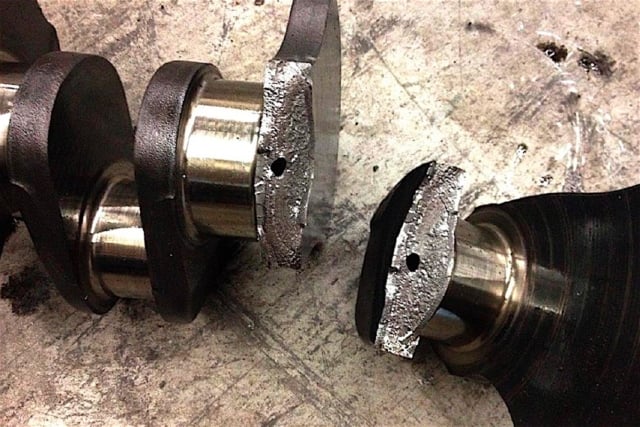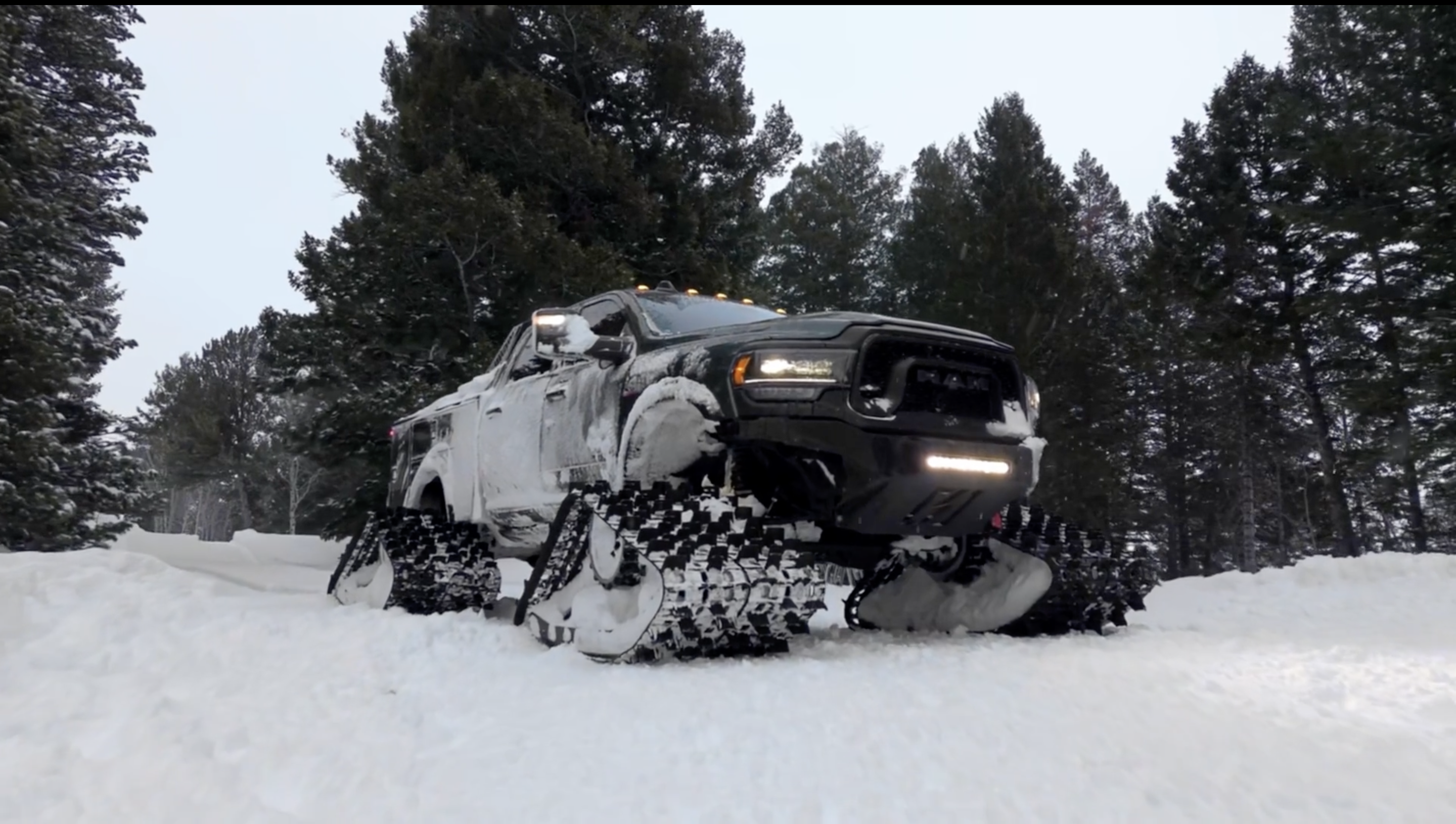 A smooth running, long-lived engine is the goal of all builders, but in the name of power and performance vibrations are inevitable. When you are dealing with the inherently imbalanced nature of something like an internal combustion engine, the dynamics of energy state changes from chemical, to thermal, to kinetic, to reciprocating and then to rotational makes for a crazy environment. It’s a wonder these things don’t just rattle themselves to pieces despite mankind’s engineering efforts over the past century.
A smooth running, long-lived engine is the goal of all builders, but in the name of power and performance vibrations are inevitable. When you are dealing with the inherently imbalanced nature of something like an internal combustion engine, the dynamics of energy state changes from chemical, to thermal, to kinetic, to reciprocating and then to rotational makes for a crazy environment. It’s a wonder these things don’t just rattle themselves to pieces despite mankind’s engineering efforts over the past century.
When we think of engine balance we’re usually talking about the dynamic balance of the rotating assembly that is the bottom end and spills up into the pistons. While it’s important to balance these objects for smoothest and most reliable operation at any rpm, they don’t spin in a figurative physics vacuum. Beyond the static and dynamic balance that you can control, there are variables that are less commonly observed — specifically the imbued harmonics of given materials and parts.
To better understand what all this means in an engine build we talked to Brian LeBarron of Fluidampr. Fluidampr and their parent company Vibratech TVD have studied at length the cause and effect of harmonics and vibrations that can harm engines.
“There’s a lot of confusion out there that people think the harmonic balancer helps balance the engine — it doesn’t, that’s all your reciprocating mass. When you take a step back and define the different types of vibration you see that for twist (torsional vibration), you need a harmonic balancer, for axial vibration you need thrust washers, for a rotational vibrations you need to balance the rotating assembly,” explained LeBarron.
The damage an engine can sustain as a result of harmonics is not limited to the crankshaft, anything linked or driven to the crank is at risk. That can mean, oil pumps, timing sets, camshafts, and by extension the valvetrain. “That vibration is going to pass through anywhere you have metal-to-metal contact, torsional vibration is not just isolated to the crank but anything that crank touches which is often the oil pump and the timing components. It’s a little more harsh in gear-driven drives, as opposed to chains or belts,” warned LeBarron.
 “This is actually live data off an engine that we’re working on — it’s an inline-6 diesel. You can see that huge spike in cylinder pressure, that’s the force that gets everything in motion. In a diesel you see that pressure is a lot higher than a gas engine, your typical LS1 is running about 1,200-1,400 psi — but because of the fuel pressures and compression ratios being so high we see over 17,000 psi,” detailed LeBarron
“This is actually live data off an engine that we’re working on — it’s an inline-6 diesel. You can see that huge spike in cylinder pressure, that’s the force that gets everything in motion. In a diesel you see that pressure is a lot higher than a gas engine, your typical LS1 is running about 1,200-1,400 psi — but because of the fuel pressures and compression ratios being so high we see over 17,000 psi,” detailed LeBarron
 With a better foundational knowledge that vibration of the torsional variety is the main concern addressed with a viscous damper, we could address how that sort of strain makes it to the crankshaft. The best analogy is of a load-bearing rope, while the tensile strength of the rope may allow it to lift 100 pounds, a shock load to the same amount will cause a failure. Similarly, in engines, a rolling twist of the crank will be far more forgiving than a sudden torque input.
With a better foundational knowledge that vibration of the torsional variety is the main concern addressed with a viscous damper, we could address how that sort of strain makes it to the crankshaft. The best analogy is of a load-bearing rope, while the tensile strength of the rope may allow it to lift 100 pounds, a shock load to the same amount will cause a failure. Similarly, in engines, a rolling twist of the crank will be far more forgiving than a sudden torque input.
“We can have a rolling twist, or we can have a sharp twist with torque behind it. The rolling twist visible in the top chart shows that just off idle we have movement back and forth, but not a lot of force. Next we see a little blip at 4,200 rpm, looking at the amount of torque behind it represents a rapid acceleration and deceleration of the crank. That’s what you have to watch for, it’s going to be much more destructive than just the rolling twist. With a rolling twist both ends of the crank are moving together, but here one end is moving faster than the other.”
Tuning an engine can be just like tuning a musical instrument. Just as the musician seeks to attenuate dissonant frequencies from their song, so does the engine builder. As any instrument that is designated as playing in a certain key, engines or crankshafts rather have their own resonant frequencies like a tuning fork — regardless of how they have been balanced.
 “If you wanted to figure out the what the natural frequency is of a rotating assembly, the big things from the equation are the spring rate and the inertia. The spring rate is going to be the stiffness of the crank, and the inertia is the amount of mass. The engineers work through the figures and come up with a range in hertz (Hz) of where a natural frequency is going to occur — where it’s going to be most susceptible to damage,” LeBarron calculated.
“If you wanted to figure out the what the natural frequency is of a rotating assembly, the big things from the equation are the spring rate and the inertia. The spring rate is going to be the stiffness of the crank, and the inertia is the amount of mass. The engineers work through the figures and come up with a range in hertz (Hz) of where a natural frequency is going to occur — where it’s going to be most susceptible to damage,” LeBarron calculated.
While establishing the specific harmonics of your rotating assembly may not be a do-it-yourself calculation, since it involves some heavy metallurgical knowledge and physics, it is worth being aware of.
“Say that rotating assembly is sensitive at 330 Hz, when we test it for torsional vibration we can see that this particular BBC will be firing four cylinders in one rotation, that fourth order is going to be based off that — it will then set off other reciprocating vibrations off of that, a third order and a fifth order and so on. When we have this fourth order that hits around 5,000 rpm it comes in line with the resonant frequency at around 330 Hz. What follows behind that is a big spike in the third order,” he translated.
“To determine where that frequency is going to be is the rpm times the order divided by 60, 60 converts it to Hz. “That’s what will snap a crankshaft, it’s the same principle as if you have an opera singer and a wine glass — when they hit the frequency the glass shatters. You always have work-hardening going on but when you hit that really sensitive frequency it can just all go to hell. Any changes to the composition of the crank is going to change where that natural frequency is going to occur. We see that a lot of lightening of components which pushes the frequency higher. So if you go with a lightweight flywheel, pistons etc., you might shift it up to 400 Hz,” LeBarron clarified.
A silicone-filled viscous damper like those offered by Fluidampr strive to soften the harsh vibrations otherwise transmitted through an engine, while we may all want out exhaust systems and intakes to ring like a bell, your crankshaft is not among the parts that benefits from this sort of harmonic vibration.
“Fluidampr is what we call a broadband damper, because it works across a wide frequency range. As the torsional vibration amplitude goes higher it can compensate for that because it’s not limiting the inertia it can move against it.” Without a traditional rubber isolator with a set durometer, the Fluidampr can accommodate resonant harmonics in a variety of engines so don’t feel like you have to take a physics class to protect your engine.


















